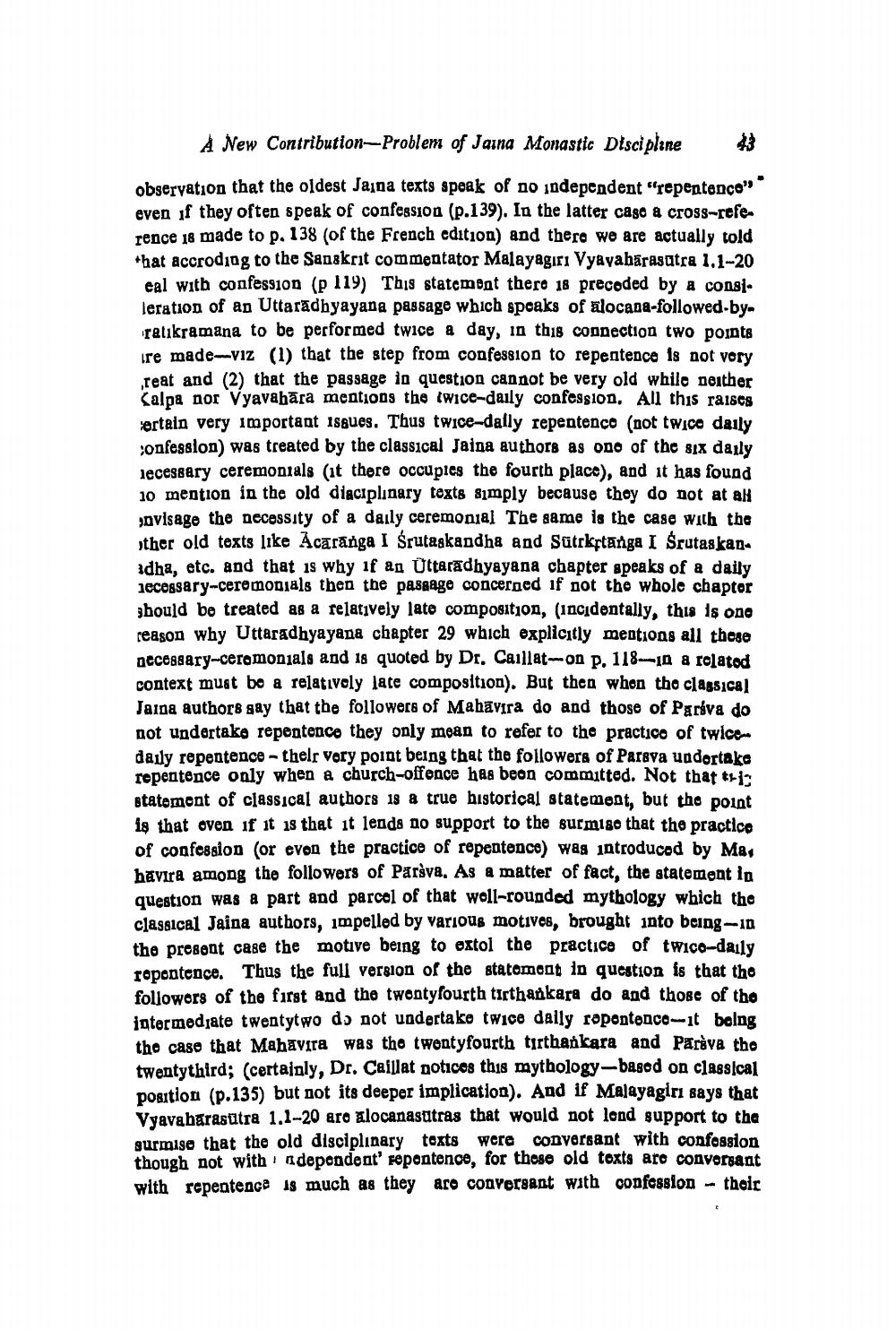________________
A New Contribution-Problem of Jaina Monastic Discipline
obseryation that the oldest Jajna texts speak of no independent "repentenco" even if they often speak of confession (p.139). In the latter caso a cross-reference 18 made to p. 138 (of the French edition) and there we are actually told that accroding to the Sanskrit commentator Malayagiri Vyayabāsasutra 1.1--20
eal with confession (p 119) This statement there 18 precoded by a consileration of an Uttaradhyayana passage which speaks of alocana-followed-byralikramana to be performed twice a day, in this connection two points ire made...VIZ (1) that the step from confession to repentence is not very reat and (2) that the passage in question cannot be very old while neither Kalpa nor Vyavabāra mentions the iwice-daily confession. All this raises ertain very important issues. Thus twice-daily repentenco (not twice daily onfession) was treated by the classical Jaina authors as one of the six daily recessary ceremonials (it there occupies the fourth place), and it has found 10 mention in the old diaciplinary texts simply because thoy do not at all ovlsage the necessity of a daily ceremonial The game is the case with the ther old texts like Acaranga I Śrutaskandha and Sütckftanga I Srutaskanadha, etc. and that is why if an Uttaradhyayana chapter speaks of a daily necessary-ceremonials then the passage concerned if not the whole chaptor should be treated as a relatively late composition, incidentally, this is one reason why Uttaradhyayana chapter 29 which explicitly mentions all those Decogary-ceromonials and 18 quoted by Dr. Caillat--on p. 118-10 a rolatod context must be a relatively late composition). But then when the classical Jaina authors say that the followers of Mahavira do and those of Paráva do not undertake repentence they only mean to refer to the practice of twice daily repentence - thelr Vory point being that the followers of Parava undertake repentence only when a church-offence has beon committed. Not that tric statement of classical authors 18 a true historical statement, but the point is that oven if it is that it lends no support to the surmiso that the practice of confession (or evon the practice of repentence) was introduced by Ma, havira among the followers of Paršva. As a matter of fact, the statement in question was a part and parcel of that woll-rounded mythology which the classical Jaina authors, impelled by various motives, brought into being-10 the present case the motive being to extol the practice of twico-daily repentence. Thus the full version of the statomcat in question is that the followors of the first and the twontyfourth tirthankara do and those of the intermediate twentytwo do not undertake twice dally ropontenco-It belng the case that Mahavira was the twentyfourth tirthankara and Parva the twentythird; (certainly, Dr. Caillat goticos this mythology-based on classical position (p.135) but not its deeper implication). And if Malayagiri says that Vyavabarasutra 1.1--20 aro alocanasutras that would not lend support to the gurmise that the old disciplinary texts were conversant with confossion though not with dependent repontence, for those old toxta are conversant with repentence is much as they are conversant with confession - their




